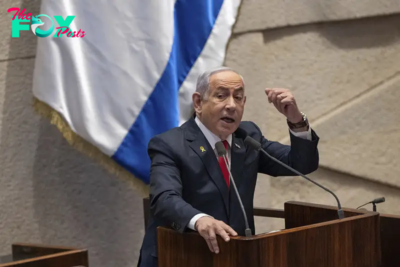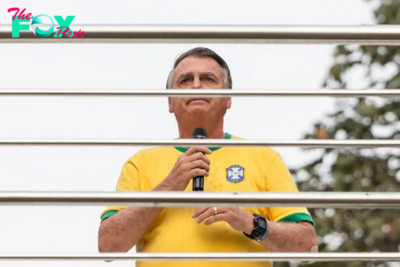World News
What Xi Jinping Really Thinks
Xi Jinping has changed China fundamentally. He has kept the same political system that Chairman Mao Zedong created when he founded the People’s Republic of China in 1949. Mao governed China with “Mao Zedong Thought,” which he introduced in 1945. Deng Xiaoping put that aside when he took power in 1978 and unleashed the “reform and opening up” era. The Dengist approach was in turn jettisoned with “Xi Jinping Thought” as the de facto state ideology in 2017. Xi is not attempting a Maoist restoration; he has ambitions even greater than Mao.
At the core of Xi’s vision is the fulfilment of the “China Dream of national rejuvenation” by 2050. But what does Xi Thought really entail? To understand this properly, we consulted all publicly available speeches, writings, and policies of Xi in the first comprehensive study of his ideology to explain how this supreme leader of one of the world’s most important countries is upending both China and the world in profound ways.
Xi’s ambition to strengthen his regime security, enhance the Chinese Communist Party’s supremacy, and deliver his dream of national rejuvenation can be boiled down to two visions.
“One Country, One People, One Ideology, One Party, and One Leader”
The first vision is to create “one country, one people, one ideology, one party, and one leader.” Xi’s vision of “one country” requires every Chinese person to submit oneself to the greater good of China as interpreted by the Party. His vision of “one country” calls for the resolute defense of China’s honor. This requires a forceful approach to tame China’s restive peripheral regions, lest they become centrifugal forces. It also implies that Xi is serious about using force to take Taiwan or territories defined by the party-state as Chinese. He sees building the People’s Liberation Army (PLA) into a, if not the, world-class military as essential to advancing his vision of “one country.”
Read More: Taiwan’s William Lai Faces a Balancing Act With China
To create “one patriotic people,” Xi Thought makes every Chinese person take on a politicized national identity and learn its tenets. Chinese heritage or culture are made inseparable from political loyalty to the PRC, the CCP, and its top leader. Thus, the Maoist ideas of the mass line (making people believe whatever the Party does is in their best interest) and the United Front (the ultimate divide and rule methodology) have been reinvigorated. In Xi Thought, the extreme measures used are meant to “educate” and “level up” those Xi deems to have fallen astray, such as the Muslim Uyghurs, other minorities, Hong Kongers, and some private tech conglomerates, so that they can become full and useful members of the “one family” that is China.
Xi wants to turn his “one people” into new socialist Chinese patriots. To this end, he invests in forging Xi Thought into the “one ideology” that enables them to think correctly. He believes that ideological indoctrination is not effective if it is not all-encompassing. That means standardizing not only people’s thinking in political or historical matters but also how Education and Entertainment providers operate. For this reason, Xi uses Technology adroitly, such as Xuexi qiangguo, the mobile app that promotes Xi Thought, to require Chinese citizens to learn Xi Thought and be monitored in how hard they are learning it on a daily basis. This is reinforced by the use of digital surveillance technologies to ensure no critical comments on Xi is allowed.
To bring Xi’s vision for “one country,” “one people,” and “one ideology” into reality, Xi Thought reinvigorates and “upgrades” the CCP into the “one party” that can guide everyone, everywhere, and in all policy areas under himself as supreme leader. The “upgraded” CCP is a Leninist party that follows strict discipline, embraces centralized hierarchy, penetrates society effectively, and upholds Xi’s leadership. Xi believes that these attributes can enable the Party, under his guidance, to lead everyone and everything in China. To cement his hold on power, Xi effectively prohibits any plan for succession, a major departure from recent Chinese leaders.
Making China “Great Again”
As Xi’s global vision is guided by a “China First” principle, which in reality means putting the power and interest of the Party—and himself as its core leader—above all other considerations, it guides Chinese foreign policy to make the world safe for authoritarianism. A world unsafe for authoritarian states like Xi’s China is one in which his government can fall victim to a “color revolution.” This vision also includes the ambition to “modernize and transform” the U.S.-led rules-based international order into one that dovetails with China’s interests and values. Xi Thought’s other key foreign policy tenet, that Chinese diplomats and officials must proudly tell China’s story well and demand others to pay due respect to China, underpins the advent of “wolf-warrior” diplomacy. This combination has six main implications, not in order of importance.
First, despite China’s craving for soft power, the Xi approach undermines China’s capacity to enjoy soft power in the rich world. But the focus of Xi Thought on soft power is the less developed, less wealthy, and often undemocratic parts of the world. Its Sino-centric mentality that primes the Chinese people to feel superior to others, in line with Xi’s tianxia worldview, where China was the “top civilization” power, is offensive to many. But the fundamentally transactional nature of Xi’s approach—whether investments via the Belt and Road Initiative or support for authoritarian rulers abroad—make Beijing a valuable partner around the globe.
Second, while China under Xi Thought ultimately aims to make China the preeminent power in the world, it will not seek to replace the U.S. as the global hegemon. It implies that if the U.S. should withdraw from a leadership role in a region and China gets to fill the void, it will do so on its own terms and not pick up where the Washington may leave off. Under Xi, China will continue to advocate multipolarity as it weakens U.S. global hegemony, but it sees it as a stepping stone toward China’s own unipolar moment, which Xi expects to achieve by the mid-century.
Third, putting China first also implies that China will take a more assertive approach toward its neighbors and the rest of the world. Under Xi Thought, China will adopt a tough line on territorial or maritime disputes, be it in the East China Sea, South China Sea, or China’s western land borders. The only major exception is over the Russian Far East, which Tsarist Russia took from the Manchu Qing Empire in 1860. Xi’s China claims the Manchu Empire as Chinese and will want this vast territory back but will hold off demanding it so that China can keep strategic partnership with Russia while it comPetes with the U.S. for global leadership. As a corollary to this assertive approach is a readiness to insist on China’s extraterritorial reach. Under Xi, Chinese fugitives, including alleged corrupt former officials and dissidents, have been brought home to face “justice.” Beijing has also pushed the Hong Kong State Security Law and enhanced the United Front work overseas.
Fourth, Xi Thought has a different view of globalization, where furthering it should only be pursued if it is beneficial to China. In policy terms, this translates into selective decoupling, as Xi seeks to strengthen China’s economic strength through innovation by any means necessary and to reduce its economic vulnerability to potential Western sanctions. In terms of China’s place in the global supply chain and economic integration, China will prioritize its domestic political needs ahead of the global common good, as evidenced in how the “dynamic zero COVID” policy and its associated lockdowns have been implemented.
Fifth, under Xi Thought, the primary focus for China’s foreign policy comPetition is the U.S. That means engaging in intense and often antagonistic comPetition with Washington. This includes inculcating hatred against the U.S. among China’s population, and celebrating major U.S. foreign policy mistakes and its democratic mishaps. While it does not intend China to replace the U.S. as the global hegemon, it does ultimately require Beijing to displace Washington as the preeminent power and assert its leadership for the world.
Sixth, and most important of all to Xi Thought, is seizing Taiwan and integrating it into the PRC. There is no doubt that Xi prefers a peaceful solution over Taiwan, which can be achieved by Taipei surrendering and accepting “reunification” with China. Since that is unrealistic, Xi requires the PLA to stay prepared to use force. However Chinese control over Taiwan is to be achieved, it can only happen by China either deterring the U.S. from interfering in line with the American Taiwan Relations Act or being sufficiently defeated to back off. Either way, China prevailing over Taiwan against U.S. wishes will fundamentally change the global and Indo-Pacific power balance, and the U.S. will have conceded a key geopolitical sphere of dominance. A Chinese victory here will show the world that Xi’s China Dream of national rejuvenation has been accomplished.
-

 World News22h ago
World News22h agoWorld’s Best Brands – Brazil
-

 World News1d ago
World News1d agoWorld’s Best Brands – India
-

 World News2d ago
World News2d agoInternational Criminal Court Issues Arrest Warrants for Netanyahu and Hamas Commander
-

 World News2d ago
World News2d agoLandmark Bill to Ban Children From Social Media Introduced in Australia’s Parliament
-

 World News2d ago
World News2d agoAmerican and Australian Tourists Die in Laos After Drinking Tainted Alcohol
-

 World News2d ago
World News2d agoSee Photos of the Seventh Volcanic Eruption on Iceland’s Reykjanes Peninsula in 12 Months
-

 World News2d ago
World News2d agoMuhammad Yunus on the Race to Build Bangladesh 2.0
-

 World News2d ago
World News2d agoU.S. Charges Indian Billionaire Gautam Adani With Defrauding Investors



















